
When Moscow introduced a ban on imports of foreign foods, including cheese, in August 2014, Russians who had grown accustomed to Swiss Emmental, French Brie and Italian Pecorino were forced to choose between a limited selection of bland Russian-produced cheese options. A few hardy Muscovites have taken import substitution of cheese to a whole new level, however - by making their own. Try this RBTH-approved recipe for Camembert, and you might just end up with a homemade soft, piquant cheese with snow-white mouldy crust.
1. Watch the pan closely – it must be disinfected, dry and clean. This is necessary to avoid the introduction of pathogenic bacteria, which can change the taste of the future cheese or even prevent it from ripening.
2. Carefully fill the pan with 4 liters of raw milk and put it on the kitchen stove to warm up on low heat.
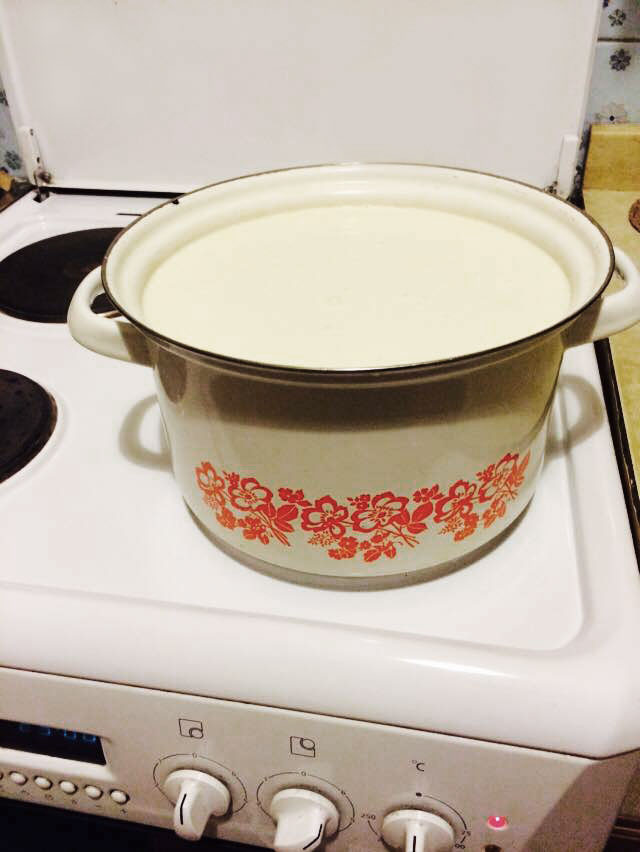 Source: Ilya Krol / RBTH
Source: Ilya Krol / RBTH
3. Do not move a step from the stove . Slowly stir the milk with a slotted spoon every minute. Between 5-7 minutes after putting your pan on the stove, start measuring the temperature of the milk with the food thermometer. If you have been diligent in stirring the milk, the thermometer will not show different temperatures in the lower and upper layers of the liquid.
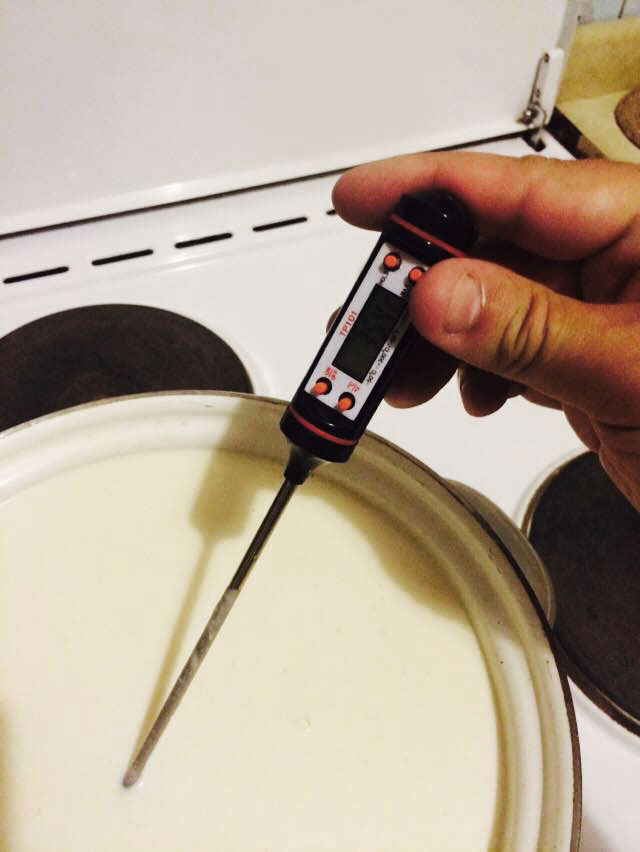 Source: Ilya Krol / RBTH
Source: Ilya Krol / RBTH
4. When the temperature of the milk reaches 30 degrees celsius, turn off the stove. (If the milk begins to boil, the process of pasteurization will start and you will have no choice but to drink the milk, since the bacteria necessary for creating cheese will no longer take an interest in it). Put the mesophyll fermentation starter and 2 types of mold on the milk’s surface. Let the powder dissolve into the liquid for a couple of minutes, then stir the milk. Dissolve calcium chloride in 50 ml of water in one vessel and the rennet ferment in 50 ml of water in another vessel (the syringe will be helpful here). Put both solutions into the milk and mix it all again.
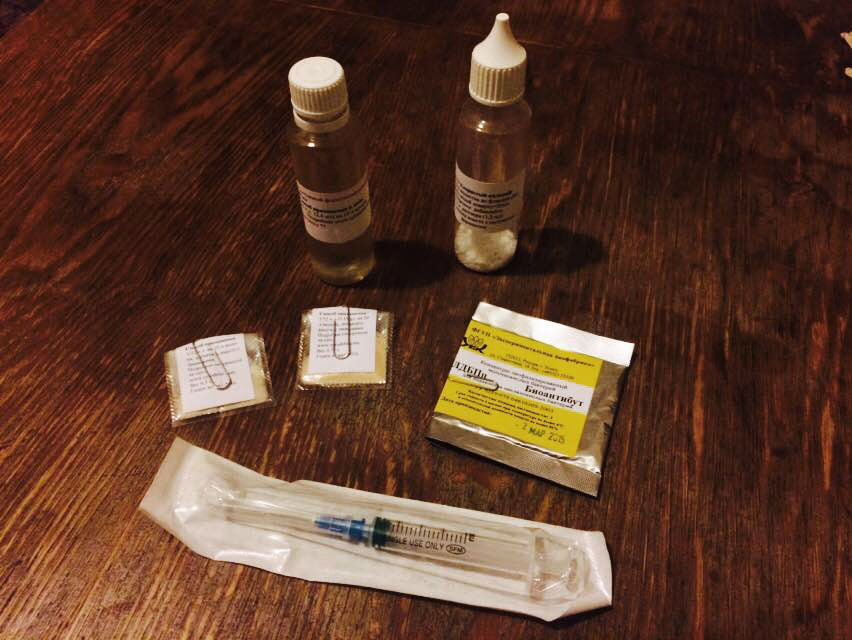 Source: Ilya Krol / RBTH
Source: Ilya Krol / RBTH
5. Cover the pan and leave it for 1.5 hours. After these 90 minutes have passed, lift the cover off the pan and stir this resinous mixture again. At this point, you should see a mix of curds and whey that looks like this:
 Source: Ilya Krol / RBTH
Source: Ilya Krol / RBTH
6. Stir the mixture, consolidating the curds and separating them from the whey, for about 10 minutes. Then start placing the clots of curds into your two cylindrical containers, which you should set into a pan or on a tray.
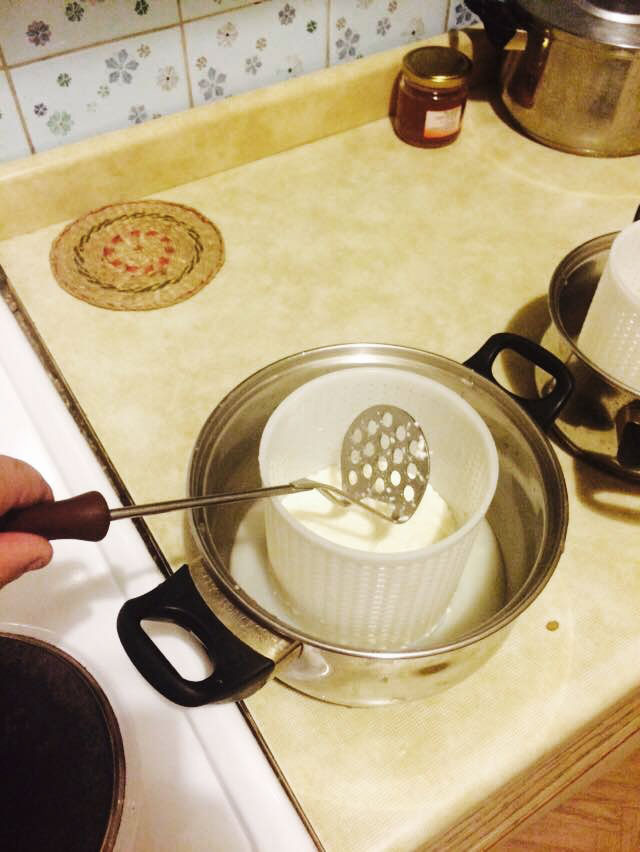 Source: Ilya Krol / RBTH
Source: Ilya Krol / RBTH
7. For an hour, press the curds while pouring the whey out of the pans. In the end, you must have a hard mass, like in this picture. This is now called a kebbuck, the term for a whole wheel or ball of cheese.
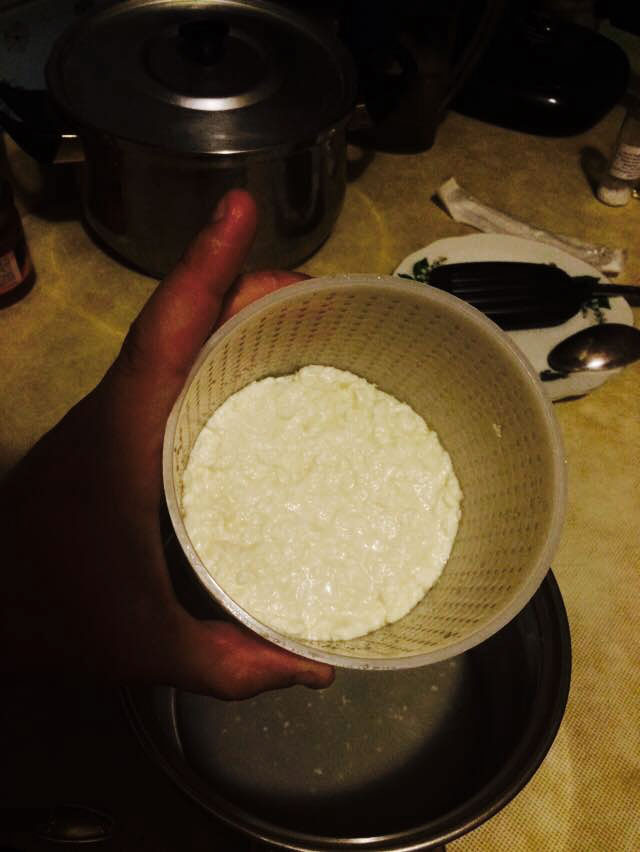 Source: Ilya Krol / RBTH
Source: Ilya Krol / RBTH
8. Cover each cylinder with a cheesecloth, turn and carefully take the kebbucks out, turn them over, and put back into the cylinder with the opposite side down. Press the mass and leave it to set for 2 hours. Then turn the kebbucks every 30 minutes for 3 hours, removing them from the cylinders and putting them back in. Make sure you do not touch the product with your hands.
 Source: Ilya Krol / RBTH
Source: Ilya Krol / RBTH
9. Leave your newborn cheese in the form for 10 hours. After that, take the forms off and salt the cheese with with ½ teaspoon on each side.
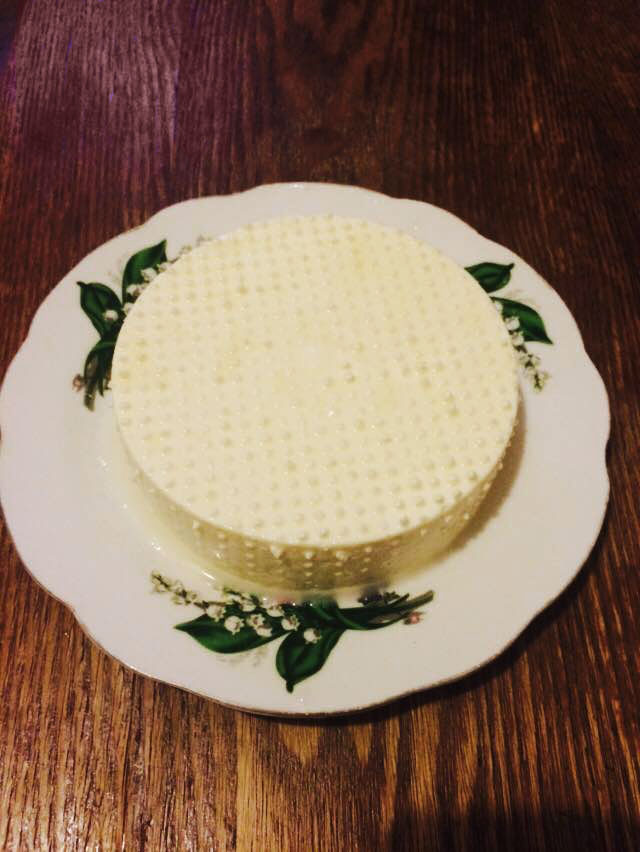 Source: Ilya Krol / RBTH
Source: Ilya Krol / RBTH
10. Put the kebbucks on the cheesecloths and, turning them each hour, let them dry off for 2-3 hours.
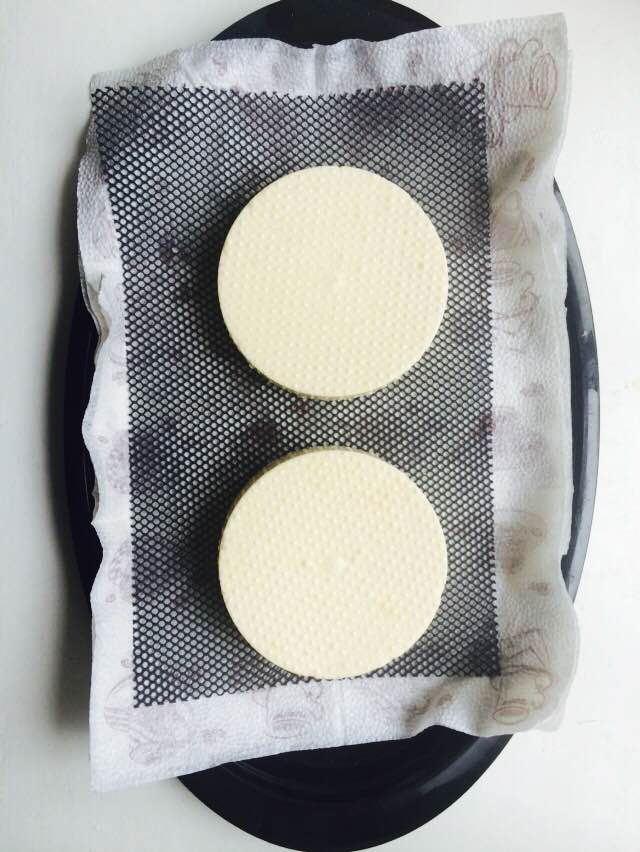 Source: Ilya Krol / RBTH
Source: Ilya Krol / RBTH
11. After drying, put the cheese to ripen. Line a food container with 2 layers of paper napkins. Lay the cheesecloths on the napkins and put the cheese on top. Cover the container, but not too tightly. There should be some space for oxygen to get in and moisture to get out. Then, place the container on the lower shelf of the refrigerator. The cheese must ripen for at least 4 weeks at a temperature of 6-8 degrees celsius. Turn the kebbucks every day to let the mould grow evenly. During the third week, you can wrap the cheese in a towel or parchment paper.
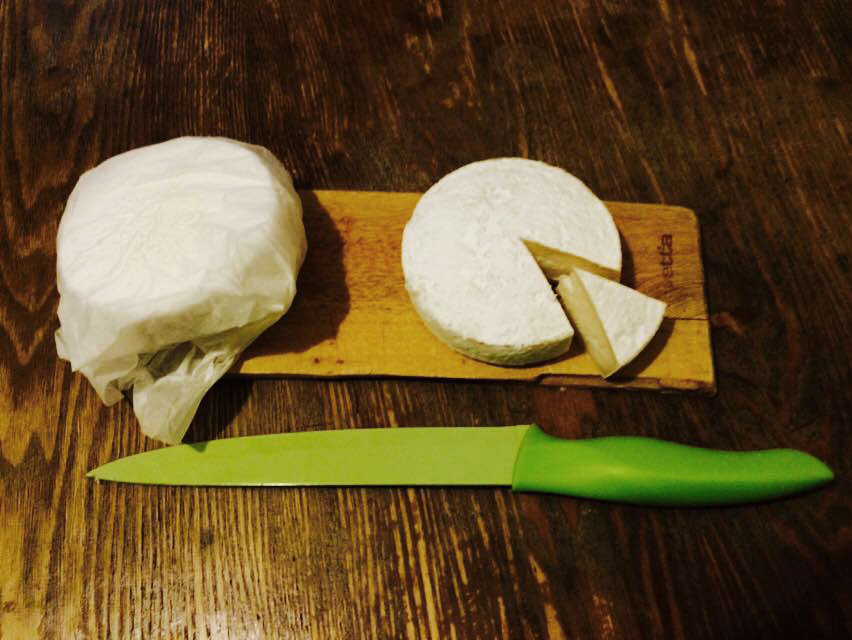 Source: Ilya Krol / RBTH
Source: Ilya Krol / RBTH
12. After four weeks have passed, if you did everything right, your Camembert a la Muscovite looks like this and can be served at the festive table. Bon appetit!
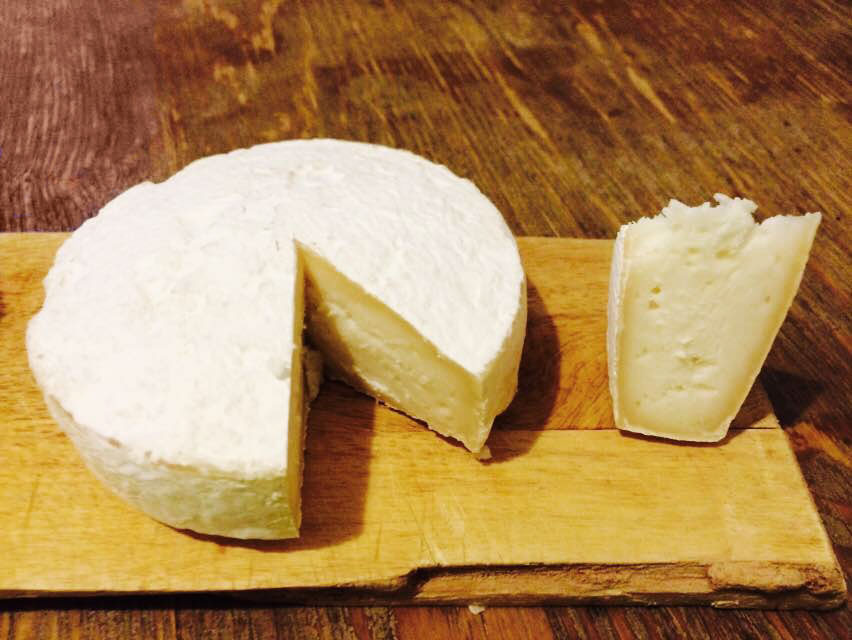 Source: Ilya Krol / RBTH
Source: Ilya Krol / RBTH
All rights reserved by Rossiyskaya Gazeta.
Subscribe
to our newsletter!
Get the week's best stories straight to your inbox